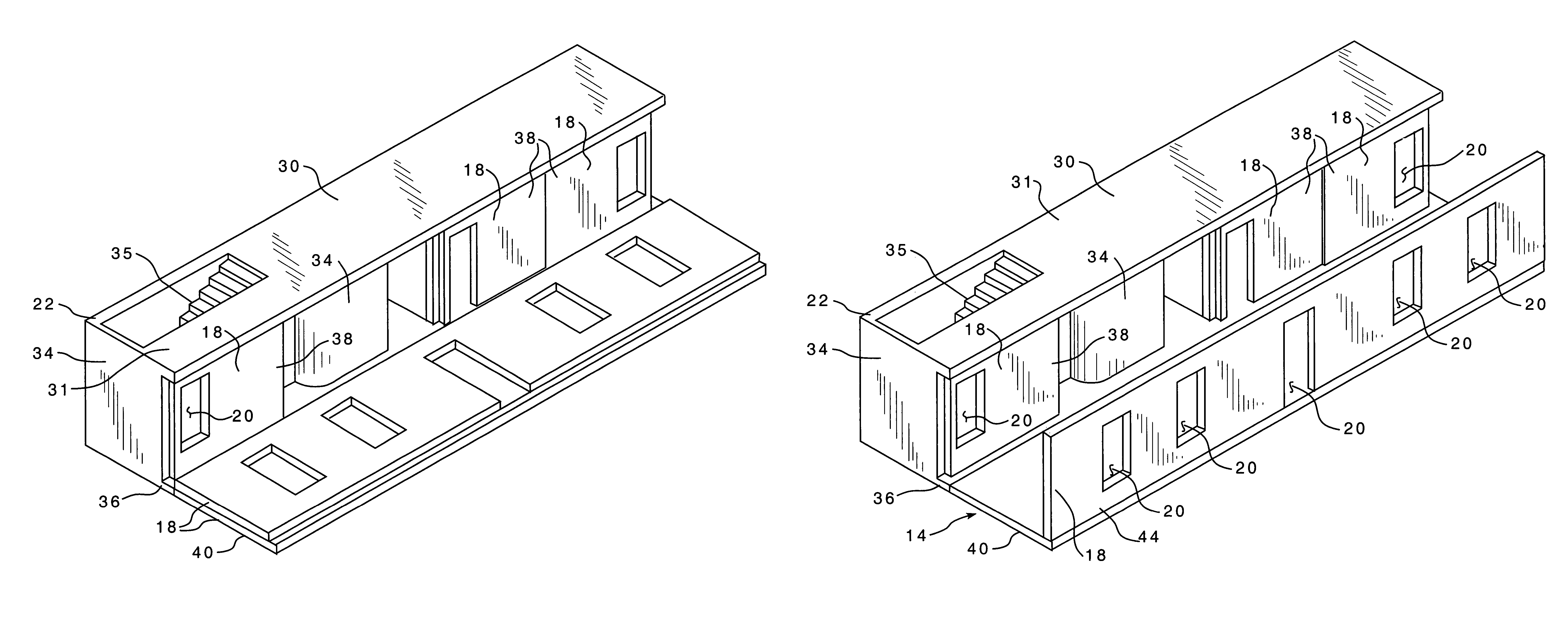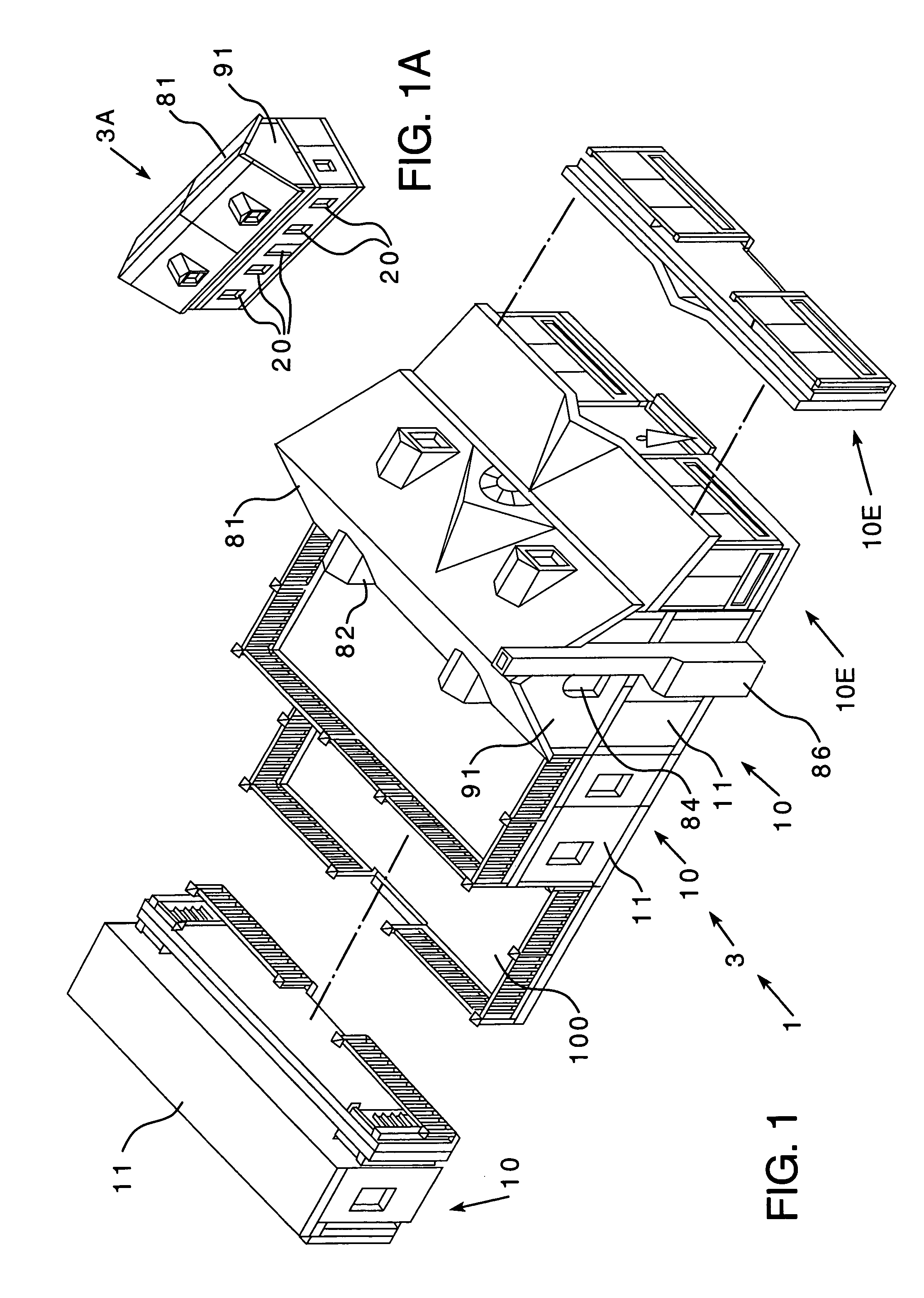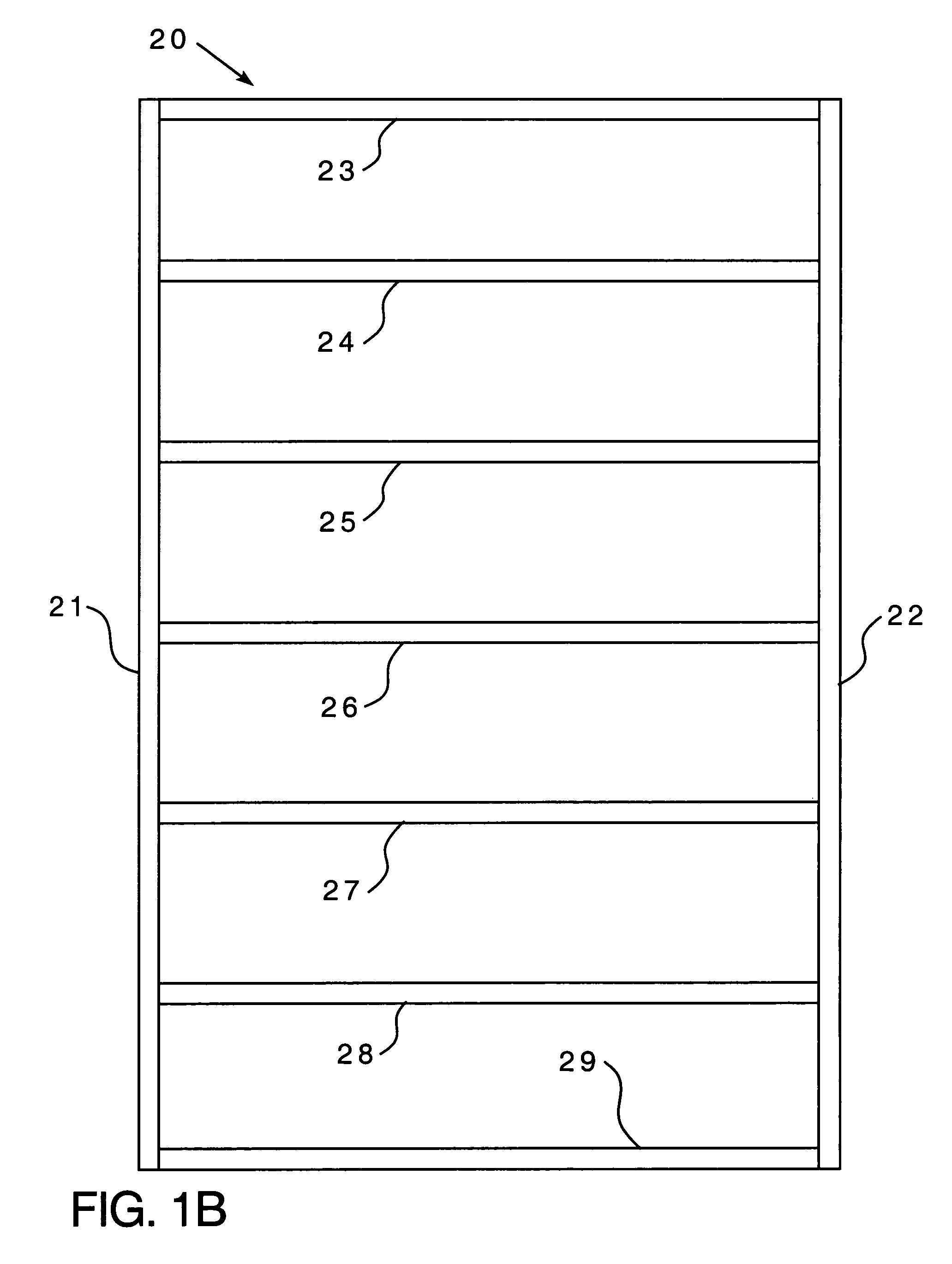Modular prefabricated house
a prefabricated house and modular technology, applied in special buildings, parkings, buildings, etc., can solve the problems of substantial time consumption of prior art 16 foot wide products, avoid large-scale shipping costs, and avoid problems which can add substantially to the cost of the hous
- Summary
- Abstract
- Description
- Claims
- Application Information
AI Technical Summary
Benefits of technology
Problems solved by technology
Method used
Image
Examples
Embodiment Construction
[0057]As shown in FIG. 1, a prefabricated house system 1 is assembled from a series of modules 10. The prefabricated house system 1 may have as few as two modules 10 or include a plurality of joined modules 10. As such, the prefabricated house system 1 may be used to construct a prefabricated house 3. The prefabricated house 3 may be any size, such as the smaller prefabricated house 3A shown in FIG. 1A, or a larger prefabricated house 3, as shown in FIG. 1. Alternatively, as shown in FIG. 2, the same modules 10 may be used to construct a multi-level condo 2, single and multi story motels (not shown), retail buildings, temporary offices, or temporary shelter. The preferred embodiment is component driven, i.e., each module 10 is one of several modules 10 to complete the prefabricated house 3 not a finished product in and to itself. Moreover, as described below, the modules are factory built and shippable within standard international container (ISO) dimensions, nationwide and worldwid...
PUM
 Login to View More
Login to View More Abstract
Description
Claims
Application Information
 Login to View More
Login to View More - R&D
- Intellectual Property
- Life Sciences
- Materials
- Tech Scout
- Unparalleled Data Quality
- Higher Quality Content
- 60% Fewer Hallucinations
Browse by: Latest US Patents, China's latest patents, Technical Efficacy Thesaurus, Application Domain, Technology Topic, Popular Technical Reports.
© 2025 PatSnap. All rights reserved.Legal|Privacy policy|Modern Slavery Act Transparency Statement|Sitemap|About US| Contact US: help@patsnap.com



